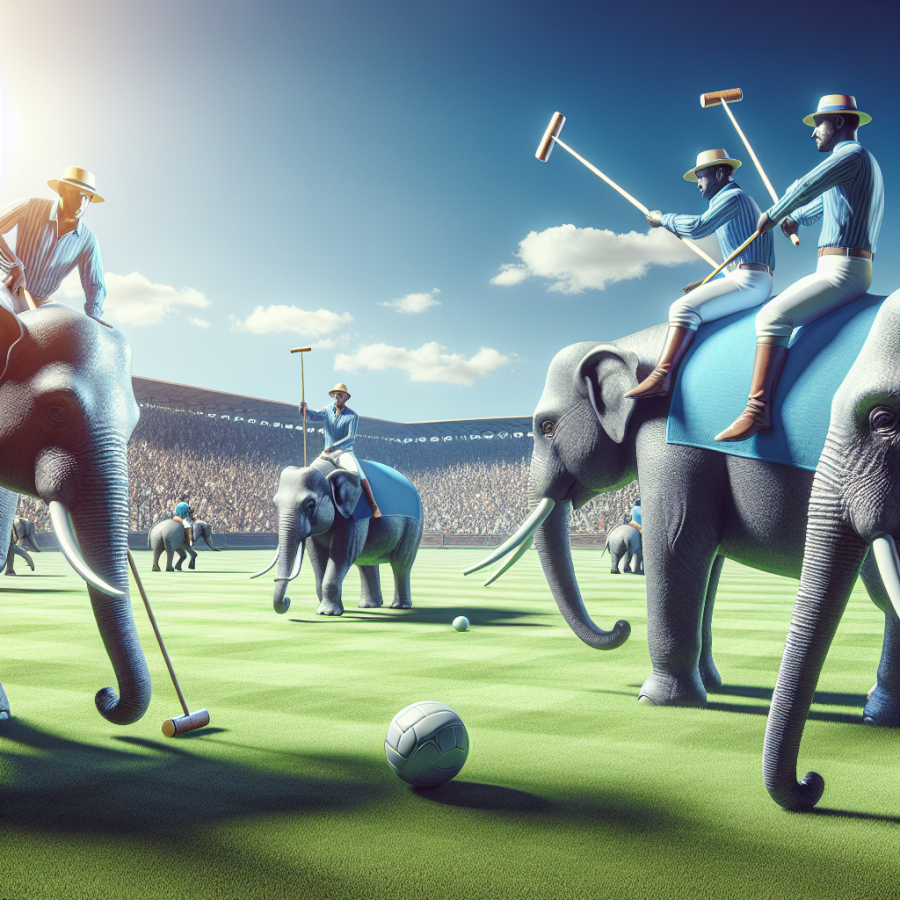The Thrill of the Game: Understanding the Rules and Gameplay of Elephant Polo
Elephant polo, an exotic variant of the traditional game of polo, is a majestic sport that has intrigued adventurers and sports enthusiasts alike. The game melds the grandeur of prince-sized pachyderms with the thrill of the polo match, creating a unique spectacle that is both enthralling and elegant.
The Game's Objective
The fundamental objective of elephant polo is in line with that of traditional polo – teams must score points by hitting a ball into the opposing team's goal using a long-handled mallet. However, the immense size of the elephants adds an extraordinary layer of strategy and challenge to the game. Players must work in tandem with their skilled mahouts — the elephant trainers and riders — who guide these gentle giants across the field with commands and nudges.
Understanding Elephant Polo Rules
Elephant polo is played on a grassy field, which is typically shorter in length than a traditional polo field, considering the elephants' slower pace. The gameplay involves two teams, each consisting of three or four elephants, their riders, and the mahouts. Unlike horse polo, where players might change horses, each elephant is typically ridden by the same player throughout the match.
The rules are adapted to ensure the safety and welfare of the elephants. These rules prohibit actions that might overexert the elephants or put them under unnecessary stress. There is a limit to the duration elephants are allowed to play, ensuring they do not tire, and the use of the hook end of polo sticks is forbidden to prevent any accidental harm.
Regulation Equipment
The equipment used in elephant polo is modified to accommodate the size and reach of elephants. Mallets are much longer than those used in traditional polo, which allows players to reach the ball on the ground from their elevated position. The ball is often bigger and made of a light but firm material that can sustain powerful hits and roll on the grassy surface without causing injury to the elephants.
Gameplay and Strategies
A match begins with the ball being thrown in between the two competing teams. Players then attempt to drive the ball towards the goalposts to score. Given the elephants' large size, teamwork and strategic positioning become critical. Skilled mahouts manage the direction and pace of their elephants, allowing the players to focus on ball control and shot-making.
Communication is vital during gameplay, as players must constantly coordinate with their mahouts to position their elephants optimally.
Read also:
Scoring Big: How Coins Are Revolutionizing Athletic Motivation
Tracing the Origins of Elephant Polo: A Historical Overview
Elephant polo, the regal and unconventional sport that combines the grace of polo with the gentle giants of the animal kingdom, has a rich tapestry of history that has enchanted players and spectators alike. This sport is an intriguing variation of the traditional horse polo, played atop elephants, which gives it an air of the exotic and the extraordinary.
The origins of elephant polo trace back to the early 20th century, but its inception as a structured sport is credited to two adventure enthusiasts, Jim Edwards, the owner of a tiger-top resort in Nepal, and James Manclark, a former British Olympic tobogganist. Their mutual enthusiasm led to the formal creation of the sport in 1982. It was in the lush grasslands bordering the national park in Meghauli, Nepal, where the first chukkas were earnestly played, sparking a fascination that would spread beyond the borders of this Himalayan nation.
Drawing on the long tradition of elephant domestication and training in Asia, particularly in countries like Nepal, India, and Thailand, where elephants have been revered and integrated into cultural activities for centuries, elephant polo became an extension of this deep-rooted bond between humans and elephants. The mahouts, or elephant handlers, are central to the sport; they share a unique relationship with their elephants, built on respect and understanding, which is essential for navigating the game.
Historically, elephant polo was not the first occasion where the pachyderms found their place in recreational activities. Ancient accounts from various Asian civilizations report that royalty often enjoyed watching elephants perform or engage in competitions of strength and skill. Elephant polo, however, stands apart for its sophisticated rules and formalized gameplay, echoing the chivalrous and tactical nature of traditional polo.
The rules of elephant polo have evolved from its horseback counterpart but have been adapted to accommodate the larger, slower-moving, yet incredibly agile elephants. A shorter playing field is used, and the mallets are significantly longer, adapting to the towering height of the animals. With a nod to ensuring animal welfare, the sport is often played in a gentler format compared to horse polo, and the elephants' well-being is given top priority with strict regulations regarding game duration and rest periods.
Although elephant polo may not boast the centuries-old legacy of horse polo, which dates back to ancient Persia, it has quickly made its own mark in the annals of unique sporting traditions.




